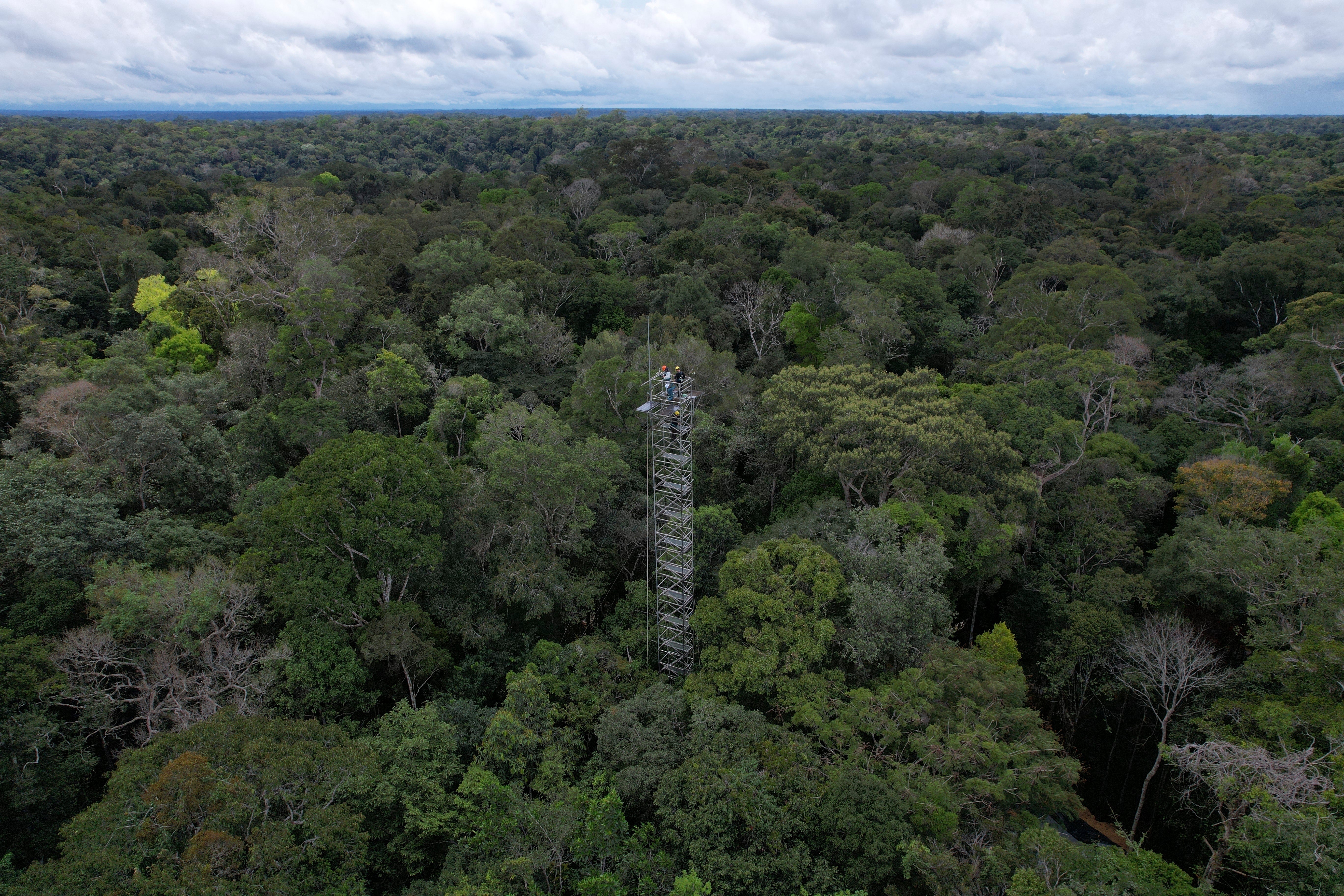Amazon rainforest stores carbon for the world, but this carbon sink is at risk, a study finds
The Amazon rainforest contains almost two years of global carbon emissions, but is under threat as a carbon sink, according to a new study

Your support helps us to tell the story
From reproductive rights to climate change to Big Tech, The Independent is on the ground when the story is developing. Whether it's investigating the financials of Elon Musk's pro-Trump PAC or producing our latest documentary, 'The A Word', which shines a light on the American women fighting for reproductive rights, we know how important it is to parse out the facts from the messaging.
At such a critical moment in US history, we need reporters on the ground. Your donation allows us to keep sending journalists to speak to both sides of the story.
The Independent is trusted by Americans across the entire political spectrum. And unlike many other quality news outlets, we choose not to lock Americans out of our reporting and analysis with paywalls. We believe quality journalism should be available to everyone, paid for by those who can afford it.
Your support makes all the difference.The Amazon rainforest stores the equivalent of almost two years of global carbon emissions, but its role as a carbon sink is under threat, according to a study released Monday.
The U.S. nonprofit Amazon Conservation used satellite data provided by the Planet company to calculate how much climate-changing carbon the Amazon forest stores. An analysis of the data concluded that with deforestation there's a danger the Amazon could start contributing more carbon than it absorbs from the atmosphere.
Researchers found Amazon trees held 56.8 billion metric tons of carbon above ground in 2022. They said that’s 64.7 million metric tons more than in 2013, making the Amazon a carbon sink over the last decade.
But it´s now a “very small buffer,” according to an analysis by Planet. “There’s reason to worry that the biome could flip from sink to source with ongoing deforestation.”
Clearing vegetation eliminates trees that absorb carbon. Cutting and burning them puts more carbon into the atmosphere. And cleared land often is used for farming and livestock grazing that produce greenhouse gases.
David Lapola, a professor at the State University of Campinas who was not part of the study, told The Associated Press the findings are consistent with other studies.
While overall carbon absorption in the Amazon basin remains positive when considering only intact areas, the inclusion of forest degradation changes the picture, Lapola said.
However, he added that deforestation, which has destroyed roughly 20% of the Amazon, is an easier problem to solve than the impact of climate change on the rainforest, which is struggling with a severe drought for the second year in a row.
“It is crucial to turn our attention to how climate change and extreme weather events could alter the carbon sink in untouched forests," Lapola said. “This is considerably more difficult to address as it involves a concerted effort to reduce greenhouse emission.”
___
The Associated Press’ climate and environmental coverage receives financial support from multiple private foundations. AP is solely responsible for all content. Find AP’s standards for working with philanthropies, a list of supporters and funded coverage areas at AP.org.